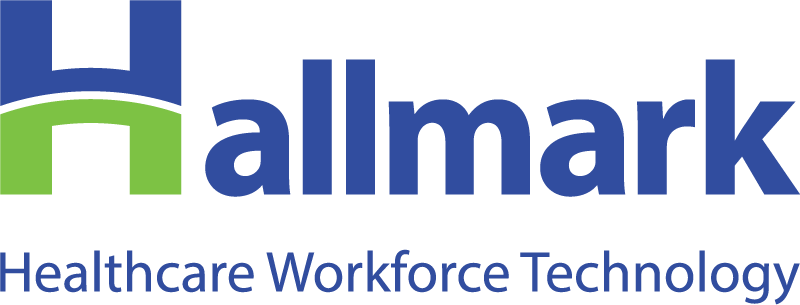Five Key Takeaways for Healthcare Systems from a Chat with Arnot Health’s Chief Nursing Officer
Healthcare labor costs are high, clinician well-being is at risk, and healthcare systems across the US are navigating an uncertain moment, all while trying to offer the best possible care for patients.
With all of this in mind, Hallmark Health Care Solutions’ Senior Vice President Matt Dane joined Arnot Health’s Chief Nursing Officer, Jerikah Gilliland for a Health Management Academy (THMA) webinar about rethinking staffing for a more resilient future.
Dane and Gilliland shared strategies for building a future-ready workforce model and discussed how flexibility for clinicians, data-driven insights for health systems, and clear communication from leadership can all lead to happier clinicians, high-quality patient care, and a healthier bottom line.
Here are five of the big takeaways for healthcare leaders.
1. To manage staffing costs, take a proactive approach.
As Dane explains, “Health systems no longer have the luxury of reactive staffing.” Even in our post-pandemic world, labor costs are still growing unsustainably—in fact, wages are significantly outpacing inflation. This is having a notable impact on healthcare systems, where that labor makes up 56% of overall expenses. And a significant driver of rising costs is contract labor—a $40 billion industry.
To reduce labor spend, healthcare systems can transition away from reactive staffing—which requires heavy reliance on contract labor—and move to a proactive approach. For Arnot, this meant bringing vendor management and float pools in-house. The results were lower labor costs and higher fill rates.
2. Offer flexibility to boost retention and engagement.
The nurses at Arnot Health had a clear message, and one that healthcare systems are hearing a lot these days: they wanted to stay with the organization, but they also wanted more adaptable schedules and broader clinical experiences.
In response, Arnot tailored its new internal resource pool to meet nurses’ needs for autonomy and variety. The system allows nurses to choose to work across multiple units and facilities while remaining employees of the organization. It also offers five flexible commitment levels that balance personal preferences with organizational needs. And the system includes incentives for nurses who are willing to work in more places and to complete long-term assignments in some areas.
The results? Nurses began picking up more hours because they saw more choices, and they were more willing to go to other locations because they knew they would be compensated for it. The system launched with 67 per diem nurses. Within seven months, they expanded to nearly 120 nurses covering over 5,500 hours each month. Overall, they improved coverage, saw higher job satisfaction from nurses, and prevented turnover.
“Flexibility gave our nurses control over their careers and renewed their connection to our organization,” explains Gilliland.
3. Tap into data and analytics for a holistic view of staffing spend—and to control costs.
When Arnot Health implemented Hallmark’s centralized workforce management platform, leaders could finally see a comprehensive, real-time view of staffing performance and spending. With predictive analytics, they could benchmark labor rates, forecast needs, and proactively manage costs.
As a result, they could make smarter decisions about staffing—which helped them save costs while maintaining a high level of care for patients. For example, before bringing on the new technology, fill rates hovered around 75 percent. Afterward:
-
-
-
- Fill rates increased to 99 percent
- Agency costs decreased by more than $2 million annually
- Dependence on agency clinicians dropped significantly
-
-
4. Lead change with clear, honest communication.
At first, nurse leaders who’d been doing the demanding work of filling open shifts and holding their staff together weren’t sure about the changes. Among their concerns, they weren’t sure they wanted to let go of control over their own per diem nurses.
The key to getting everyone on board was honest communication that helped nurse leaders understand the bigger goal: to give them back time from wrangling schedules so they could focus on the needs of their team and the patient experience.
5. Think about what’s next.
Gilliland is already thinking about the next phase of Arnot Health’s transformation. In addition to registered nurses, the team plans to expand its internal resource pool to other job categories. The goal is to scale flexibility system-wide while continuing to reduce agency reliance.
The changes at Arnot Health have impacted everything from the healthcare system’s bottom line to job satisfaction for the clinical staff, and quality of care for patients.
“The passion and innovation of our team were what made this successful,” Gilliland says. “We were all focused on improving patient care through a stronger workforce.”
Wondering how a comprehensive workforce intelligence and engagement platform could give you a more complete view of your workforce, help you plan for the future, and lower costs so you can do what matters most: provide the very best care for your patients? Check out the full webinar and contact us for a demo: https://hallmarkhcs.com/.
